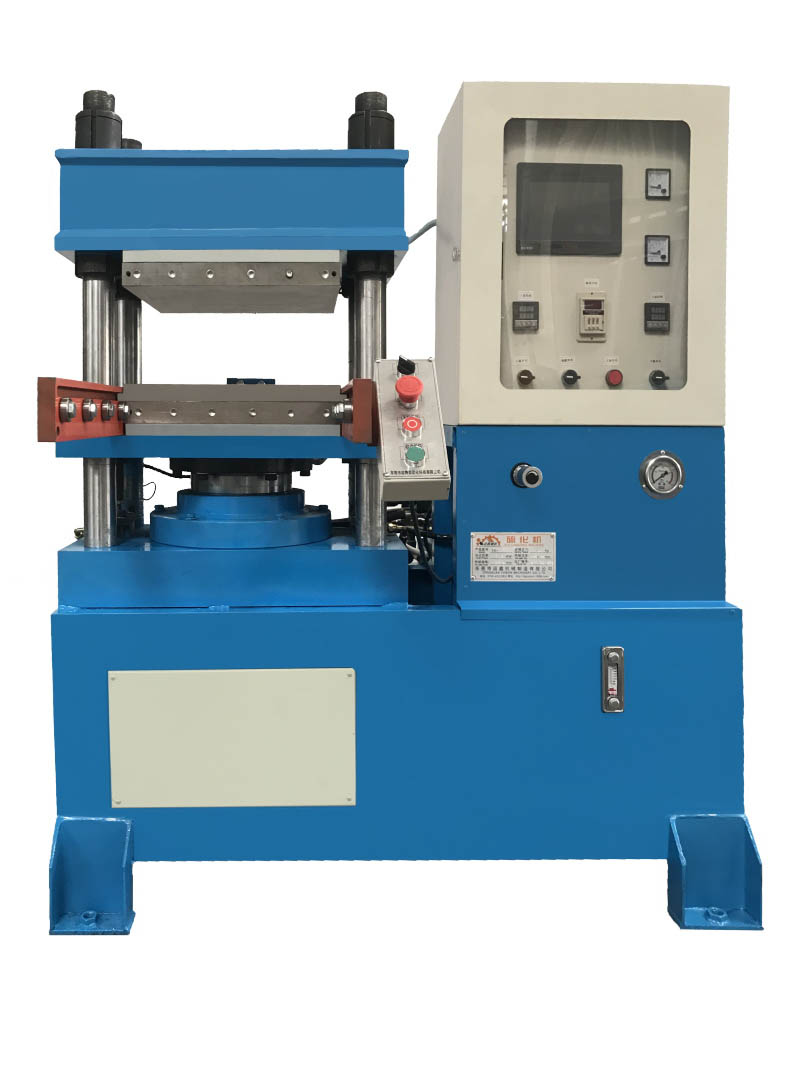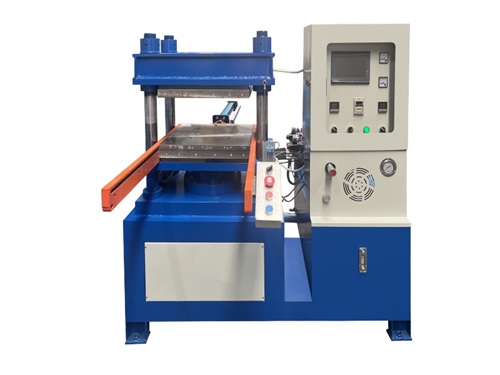
A plate vulcanizing press, also known as a plate Vulcanizer or platen press, is a specialized machine used in various industries for vulcanizing rubber and polymer materials. It is a type of vulcanizing press that employs heated platens to apply heat and pressure to rubber compounds, facilitating the cross-linking of polymer chains and resulting in improved material properties. The plate vulcanizing press has a significant impact on manufacturing processes across different sectors. The core components of the machine are the heated platens. These are flat, rigid plates that are designed to provide controlled and uniform heating to the rubber material placed between them.The plate vulcanizing press stands as a critical tool in various manufacturing sectors, shaping the quality, durability, and performance of rubber-based products. By harnessing the power of heat and pressure, this machine elevates raw rubber compounds into materials that can thrive in demanding environments. From tires that grip the road to industrial belts that power industries, the plate vulcanizing press is at the heart of manufacturing processes that drive innovation and excellence.
Model | YX-DJ63T-1 |
Hot plate specification | 400*400mm |
Hot plate spacing | 200mm |
Cylinder diameter | 200mm |
Machine structure | Four column/single head/double head model |
System pressure | 18MPa |
Heating system | Imported electric heating tube |
Power supply specification | 380V/50HZ |

Essential details | |||
Place of Origin | China | Weight (KG) | 1300 KG |
Type | Vulcanizer | Applicable Industries | Hotels, Machinery Repair Shops, Home Use |
Condition | New | Showroom Location | None |
Video outgoing-inspection | Provided | Model | YX-DJ63T-1 |
Machinery Test Report | Provided | Hot plate specification | 400*400mm |
Warranty of core components | 1 Year | Hot plate spacing | 200mm |
Core Components | PLC | Cylinder diameter | 200mm |
Voltage | 300V/50HZ | Motor power | 4KW |
Dimension(L*W*H) | 1.5*1.4*1.5(m) | Temperature range | Normal temperature -350°C |
Warranty | 1 Year | Working level | Upper and lower layer |
Key Selling Points | Automatic | Machine structure | Four column/single head/double head model |
Power (kW) | 4 kW | System pressure | 18MPa |
A plate vulcanizing press, also known as a rubber plate vulcanizing press or rubber plate vulcanizing machine, is a specific type of equipment used in the rubber industry for the vulcanization of rubber plates or sheets. This process is similar to the general vulcanization process described earlier but is tailored for large flat or sheet-like rubber materials. Here's a more specific overview of how a plate vulcanizing press works:
Preparation of Rubber Sheets: Similar to other vulcanization processes, the first step involves preparing the rubber compound by mixing raw rubber with additives. In the case of plate vulcanizing, this compound is often in the form of sheets or plates.
Loading the Press: The rubber sheets are placed between the plates of the vulcanizing press. These plates are usually made of metal and may be heated internally.
Closing the Press: The press is closed, applying pressure to the rubber sheets. The amount of pressure applied depends on the specific requirements of the rubber material and the vulcanization process.
Heating: The vulcanizing press applies heat to the rubber sheets. The heat is a crucial component of the vulcanization process, activating the vulcanizing agents and promoting the cross-linking of polymer chains in the rubber.
Vulcanization: As the press maintains pressure and heat, the rubber sheets undergo vulcanization. The cross-linking of polymer chains improves the mechanical properties of the rubber, making it more durable and resistant.
Cooling and Opening the Press: After the vulcanization process is complete, the press is opened, and the now-vulcanized rubber sheets are removed. Cooling may be necessary before handling the final product.
Plate vulcanizing presses are commonly used in the production of various rubber products, such as conveyor belts, rubber flooring, gaskets, seals, and other sheet-like materials. The size and specifications of the press depend on the dimensions and thickness of the rubber sheets being processed.
A plate vulcanizing press works by closing two heated plates around a rubber or silicone component. The combination of heat and pressure initiates the vulcanization process, transforming the material into its final, cured form.
Yes, plate vulcanizing presses come in various types, including hydraulic and pneumatic models. The choice depends on factors like the type of rubber material, application, and production requirements.
Industries such as automotive, aerospace, manufacturing, and rubber processing utilize plate vulcanizing presses for producing items like rubber seals, gaskets, conveyor belts, and automotive components.
Using a plate vulcanizing press ensures precise control over the vulcanization process, leading to consistent product quality, reduced material waste, and improved manufacturing efficiency.
Regular maintenance includes cleaning, inspection, calibration, and ensuring proper temperature and pressure control to guarantee the machine's performance and longevity.
The recommended vulcanization time can vary depending on the type of rubber material and the specific product requirements. Manufacturers typically provide guidelines for optimal vulcanization conditions.
Many modern plate vulcanizing presses provide real-time monitoring and control options, allowing operators to adjust temperature, pressure, and other parameters for optimal vulcanization results.
Many plate vulcanizing presses offer recipe management systems, allowing for the storage and retrieval of specific vulcanization parameters for different rubber materials and products.
A plate vulcanizing press typically consists of heating platens, a hydraulic or pneumatic system, temperature and pressure controls, safety mechanisms, and a mold or die for shaping the rubber product.